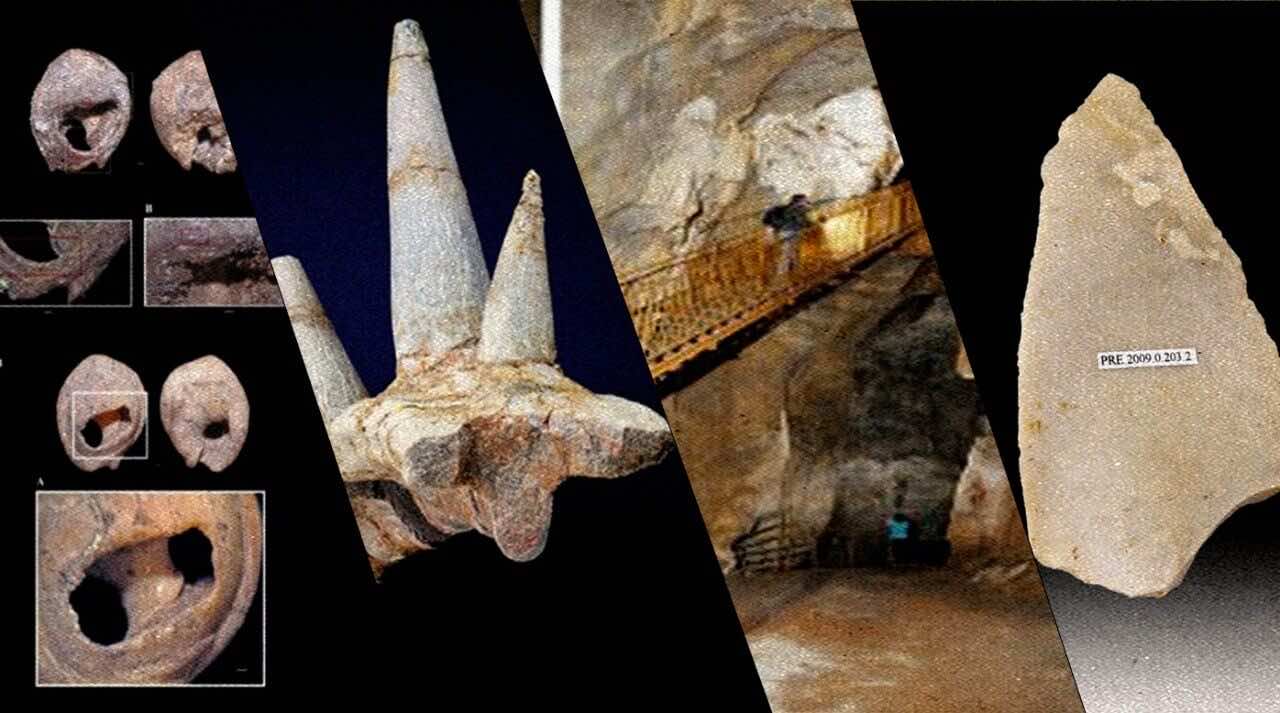Morocco has been at the center of several recent discoveries that have made headlines, both locally and internationally. The discoveries allowed archeologists to uncover some of the most fascinating secrets of ancient civilizations. Below are 6 of the most recent Moroccan discoveries.
Oldest rock carving in North Africa

Research professors at Moroccan and Spanish universities discovered rock engravings dating back to the Paleolithic age, which was roughly 2.5 million years ago, at the Camel Cave in the province of Berkane.
According to the Department of Culture of the Moroccan Ministry of Culture, Youth, and Communication, the engravings are about 12,000 years old, corresponding to the last ice age, which also affected Morocco’s northern region.
The national discovery was part of a scientific agreement between the National Institute of Archeology and Cultural Heritage (INSAP) and the Mohammed I University of Oujda on a collaboration project regarding the prehistoric human communities in the Orient.
The Department of Culture stated the archeological findings will have a very positive impact on sustainable development.
Old Macaque Fossil

A team of scientists from Moroccan and Spanish universities discovered a macaque fossil in Guefait, a town in the province of Jerada, in the eastern region of Morocco.
According to the Catalonian news outlet Catalan Diari Mes, the fossils, which date back to about 2.5 million years, are assigned to the genus Macaca, a gregarious Old-World monkey of the subfamily Cercopithecinae.
The species is estimated to have lived for 6 or 7 million years and their remains are commonly found in North Africa, but can also be found in Europe, where they migrated due to the Messinian Salinity Crisis over 5.5 million years ago.
The Journal of Human Evolution, a peer-reviewed scientific journal, suggests that future research may help fill the gap in the fossil record and determine whether the absence of the species is due to its local extinction in Africa.
Prehistoric community in the Anti-Atlas

The debitage stone, discovered at the rock site Imaoun, located in Southern Morocco, indicates the existence of a possible prehistoric community.
Levallois lithic material, which represents a sophisticated way of shaping stone tools in prehistoric times, was discovered in the region as a result of excavations carried out there between 2017 and 2018.
As stated in the digital platform for interdisciplinary research on the Canary Islands, Almogaren, the community would have lived about twenty kilometers northeast of the Akka oasis in the Anti-Atlas.
The region is characterized by its “complex geological systems” primarily composed of sandstone and quartzites, dating back to the Paleozoic era, which began about 541 million years ago.
The recorded discoveries at the site include “two nuclei, as well as five flakes all belonging to Levallois technology.” Findings suggest a site of large scale and show clear evidence of prehistoric existence.
Ancient Marine Lizard

Archeologists in Morocco discovered a new species of Mosasaur, a marine lizard with shark-like cutting teeth, which lived about 72 to 66 million years ago.
Based on two complete skulls and referred jaws, scientists were able to reconstruct the species and reveal some of the unique characteristics.
According to a scientific paper in the Cretaceous Research journal, the marine species measured eight meters in length, unlike most of its relatives, which were unable to grow more than a few meters. It also had “elongate and robust jaws, small teeth, and specialized tooth implantation.”
The creature had poor eyesight and “relied on nonvisual cues including touch and chemoreception during foraging, as in modern marine snakes,” according to the paper.
New artifact suggests Morocco as origin of human culture

Research on ancient jewelry recovered from the Bizmoune cave in the South West of Morocco indicates the ornaments may represent the earliest evidence of advanced human culture.
There have been 33 shell beads recovered, dating back to over 142,000 years, which would place them in the late Middle Pleistocene period, the same geologic time period as the earliest documented emergence of humanity.
An academic paper published by Science Advances stated that the artifacts are considered the first sign of “symbolic behavior” by early Homo sapiens.
The primitive jewelry is “widely interpreted as evidence for expanding social networks and complexity of social interactions,” says the paper.
The researchers stated that the findings completely altered the study of human civilization during its early stages, allowing North Africa to become a prominent academic focus on the subject.
Unique dinosaur fossil

Scientists discovered a dinosaur fossil with “bizarre” spikes dating back to about 168 million years ago in Morocco’s Boulahfa in the Middle Atlas Mountains.
The discovery is unprecedented to scientists and archaeologists alike. The remains of the heavily armored creature have preserved defensive spikes that are fused to the skeleton.
The fossil belongs to an Ankylosaurus, a type of herbivore species of dinosaurs that are known for their “ebony armpit that once covered their backs,” according to the Natural History Museum.
The finding is now part of the collection at the Natural History Museum, where researchers will continue to study the remains.
The new discovery represents a significant milestone because it is the first time a fossil of this type has been discovered in Africa.
















